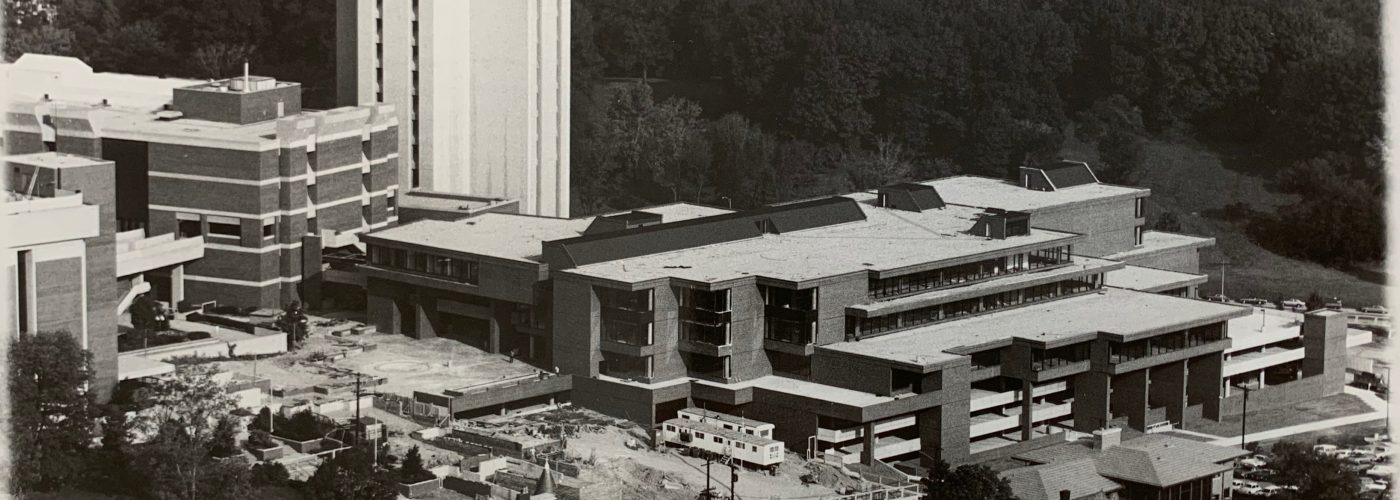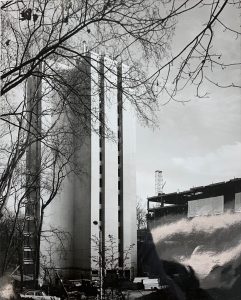There is no other building on the University of Cincinnati’s campus that is as recognizable as the 16 story, single poured concrete glorified pillar known as Crosley tower. Crosley tower was named after Powel Crosley Jr thanks to a combination of his status, active role in the community and large donations to the University of Cincinnati. Crosley tower was part of what was originally known as the Renton K. Brodie Science and Engineering Complex, and later the Library Square. Crosely tower sat at the heart of what became the latest epicenter of academic sciences at the University of Cincinnati. Erected in 1969 — although the University’s archives revealed that plans began as early as 1963 — the tower became the tallest tower on campus, and most of all, the world’s largest single pour concrete structure. Brutalist and authoritarian defined the slick concrete tower with minimal windows and imposing overhangs. This architectural marvel has been a topic of
discussion since the day its doors opened to the student body.
In the original 1963 master plans, all of the buildings of the Brodie Complex followed the International style, a style that was popular in the United States after WWII. Instead of the decedent and rowdy Art Deco of the 20s and the brutalish and authoritative style of the 30s, the International style was restrained, cold and emotionless with buildings being mere glass boxes with no hint of personality or individuality. As a result of following the International style, the Brodie complex in the 1963 plans looked like cookie-cutter business buildings seen in stock 90’s photos. Years later, the Crosley Tower engineers revamped the complex’s whole design and opted for the current iconic look that lived on 50 years later. The engineers’ reasoning was in part to breath personality into the otherwise boring complex. Additionally, other aspects of material and physical construction lead to the decision to rely primarily on concrete. Concrete could be formed in many different shapes, with brick having to be laid by hand creating a plethora of building restrictions and expensive manual labor costs. Brick also would not be able to support the weight of the structure, nor could it support the towering overhang like the solid unmoving stability of concrete. By standing out from the neo-Georgian buildings that littered the University of Cincinnati campus, the Crosley tower would eventually establish itself as the defacto engineering wing of the campus.
Despite the popping authoritarian style that made the Brodie Complex stand apart from every other neo-Georgian UC buildings, as well as the record breaking height of the tower, the crushing weight of controversy piled on its concrete roof over the years until the very building sunk into the ground. Now, construction crews plan on demolishing the imposing tower that stood tall for half a century.


